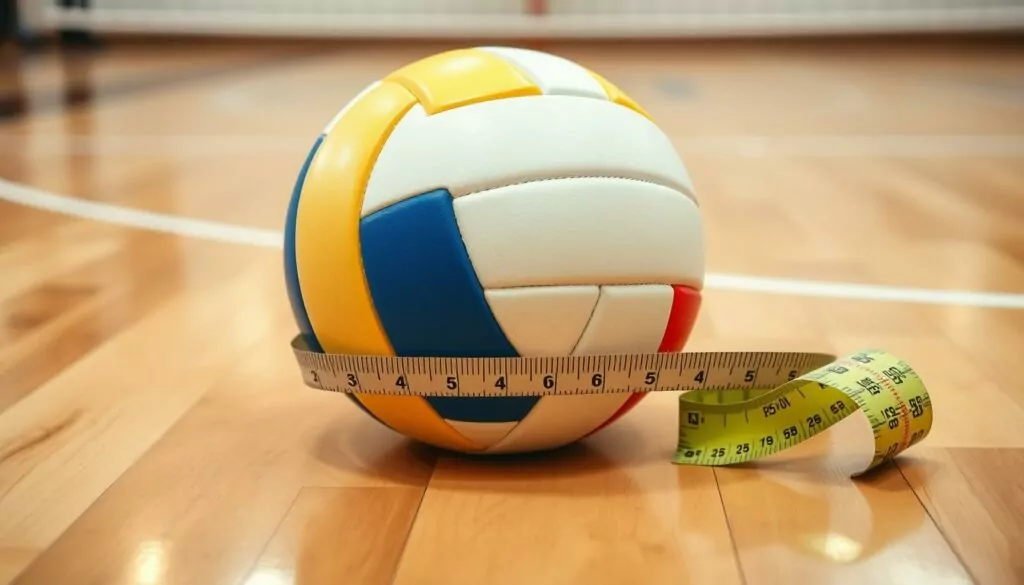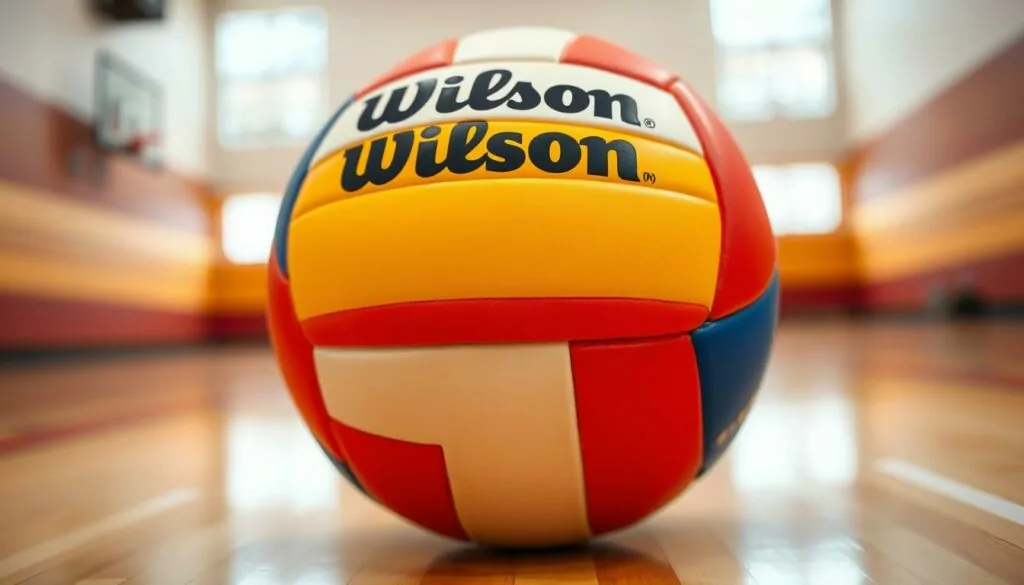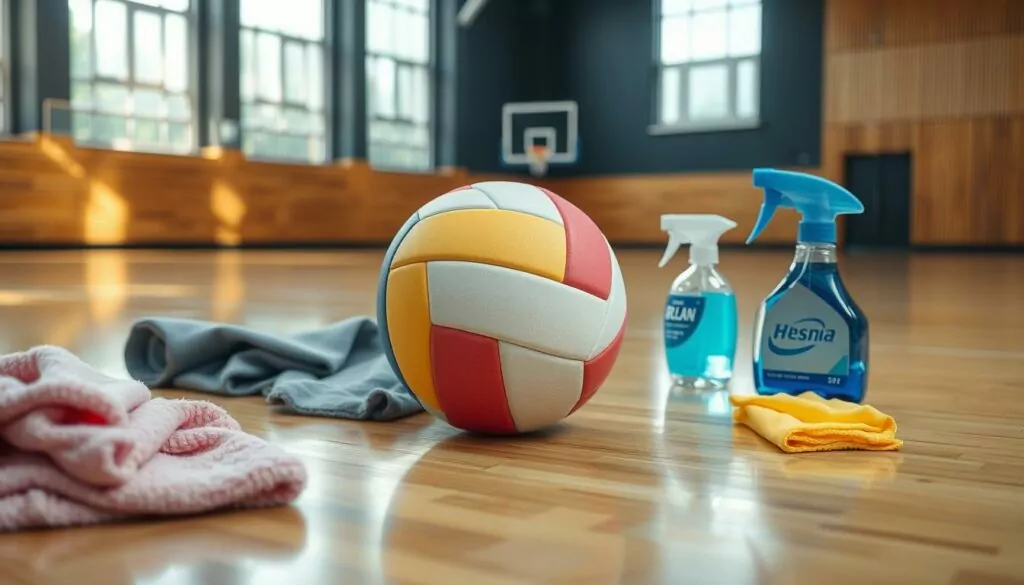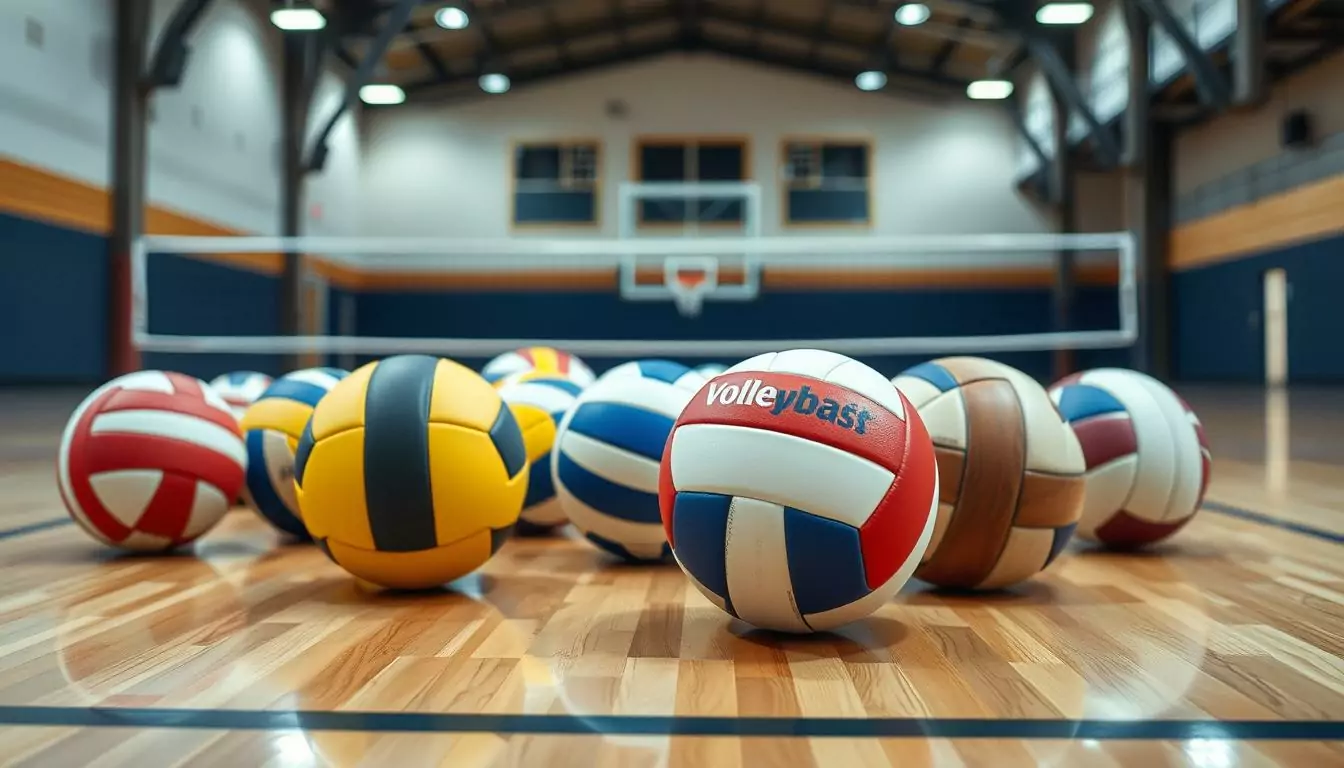The sharp smack of leather against palm, the electric buzz of anticipation on the court – these are the sounds that still give me goosebumps after years of playing indoor volleyball. As I step onto the glossy hardwood, memories of game-winning spikes and heart-stopping saves flood back. But none of it would be possible without the right volleyball. That’s why I’ve put together this guide to help you find the perfect indoor volleyball to elevate your game.
Whether you’re a seasoned pro or just starting out, choosing the right indoor volleyball can make all the difference in your performance and enjoyment of the game. In this comprehensive guide, I’ll share my top picks for the best volleyballs for indoor play, along with key features to look for and tips to keep your ball in top shape. Let’s dive in and find the perfect volleyball to help you serve, set, and spike your way to victory!
Key Takeaways
- Indoor volleyballs differ from outdoor ones in weight, size, and materials
- Soft touch volleyballs are ideal for beginners and recreational players
- Professional-grade indoor volleyballs offer superior control and performance
- Consider your skill level and budget when choosing an indoor volleyball
- Proper maintenance can extend the life of your volleyball
- Some top brands for indoor volleyballs include Wilson, Mikasa, and Molten
Understanding Indoor Volleyballs and Their Features

Indoor volleyball is a game of precision and skill. The right ball can make all the difference in your play. Let’s dive into the key features that set indoor volleyballs apart.
Importance of Weight and Size
Regulation volleyballs are designed with specific weight and size requirements. A standard indoor volleyball weighs between 9.2 to 9.9 ounces and has a circumference of 25.6 to 26.4 inches. This consistency ensures fair play across all levels of competition.
Materials Used in Indoor Volleyballs
Two main types of materials are used for indoor volleyballs: leather and composite. Leather volleyballs are the traditional choice, offering excellent feel and control. Composite volleyballs, on the other hand, are more durable and maintain their shape better over time.
| Material | Pros | Cons |
|---|---|---|
| Leather | Superior feel, excellent control | Higher cost, requires more maintenance |
| Composite | More durable, consistent shape | May lack the premium feel of leather |
Benefits of a Soft Touch
A soft touch in indoor volleyballs is crucial for player comfort and ball control. It allows for better reception, setting, and spiking. The softness also reduces the impact on players’ arms during extended practice sessions or matches.
“The right volleyball can elevate your game. It’s not just about how hard you hit, but how well you control the ball.”
I find that understanding these features helps players make informed decisions when choosing their ideal indoor volleyball. Whether you prefer leather volleyballs or composite volleyballs, the key is finding one that suits your playing style and skill level.
My Top Picks for Indoor Volleyballs

I’ve tested countless indoor court volleyballs to bring you the cream of the crop. These picks stand out for their performance, durability, and feel. Let’s dive into the top competition volleyballs that’ll elevate your game.
Wilson Soft Play Volleyball
The Wilson Soft Play is perfect for beginners. Its soft touch reduces the sting on impact, making it ideal for those still honing their skills. The ball’s lightweight design aids in developing proper form without straining muscles.
Mikasa MVA200 Indoor Volleyball
Mikasa’s MVA200 is the official Olympic volleyball. It boasts superior flight stability and a consistent touch. The dimpled surface offers excellent grip, allowing for precise ball control during intense rallies.
Tachikara SV5WSC Volleyball
The Tachikara SV5WSC features a unique “Sensi-Tec” composite leather cover. This material provides an excellent feel and enhances ball control. Its durability makes it a favorite among school teams and recreational players alike.
Molten BV5000 Indoor Volleyball
Molten’s BV5000 is known for its exceptional softness. The premium Japanese leather cover offers a luxurious feel. Its flight stability is top-notch, making it a go-to choice for competitive players seeking precision in their game.
| Volleyball | Best For | Cover Material | Price Range |
|---|---|---|---|
| Wilson Soft Play | Beginners | Synthetic | $20-$30 |
| Mikasa MVA200 | Pro/Olympic | Micro-fiber | $60-$80 |
| Tachikara SV5WSC | All-round | Composite leather | $40-$60 |
| Molten BV5000 | Competitive play | Premium leather | $50-$70 |
Factors to Consider When Choosing a Volleyball

Picking the right indoor volleyball can make a big difference in your game. I’ll guide you through key factors to think about when shopping for your next volleyball.
Skill Level: Beginner vs. Advanced
Your skill level plays a big role in choosing the right volleyball. Beginners often prefer softer volleyballs that are easier on the arms. Advanced players might opt for firmer balls that offer more control. Many training volleyballs cater to different skill levels, so pick one that matches your abilities.
Budget-Friendly Options
You don’t need to break the bank for a good indoor volleyball. There are quality options at various price points. Here’s a quick comparison of volleyball prices:
| Price Range | Type | Best For |
|---|---|---|
| $10-$20 | Basic indoor volleyball | Casual play, beginners |
| $20-$40 | Mid-range indoor volleyball | Regular practice, intermediate players |
| $40+ | Professional indoor volleyball | Competitive play, advanced players |
Durability and Maintenance
A durable volleyball will save you money in the long run. Look for volleyballs with reinforced panels and strong stitching. Regular maintenance, like proper inflation and cleaning, can extend your ball’s life. Remember, even the best indoor volleyball needs care to perform well over time.
By considering these factors, you’ll be well on your way to finding the perfect indoor volleyball for your needs and budget.
Tips for Storing and Maintaining Your Volleyball
Taking care of your indoor court volleyballs is key to keeping them in top shape. I’ll share some handy tips to help you make the most of your game volleyballs and extend their lifespan.
Proper Inflation Techniques
Keeping your volleyball at the right pressure is crucial. I use a needle pump to inflate my game volleyballs to the recommended 4.3-4.6 psi. This ensures the ball performs well during indoor play and maintains its shape.
Cleaning and Care Instructions
After each use, I wipe down my indoor court volleyballs with a damp cloth to remove dirt and sweat. For tougher stains, I use a mild soap solution. It’s important to dry the ball thoroughly before storing it to prevent mold growth.
When to Replace Your Volleyball
Even with proper care, game volleyballs don’t last forever. I look for signs like uneven bounce, loss of air pressure, or visible wear on the surface. When these appear, it’s time to consider getting a new ball to maintain optimal performance in your indoor volleyball games.
